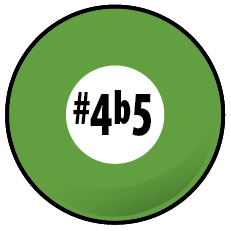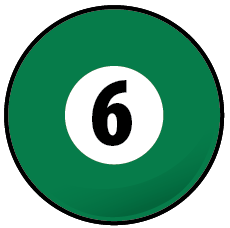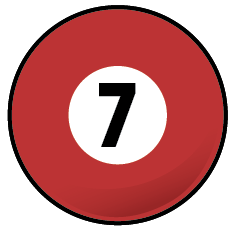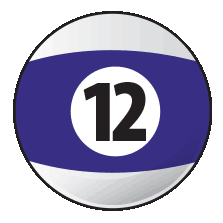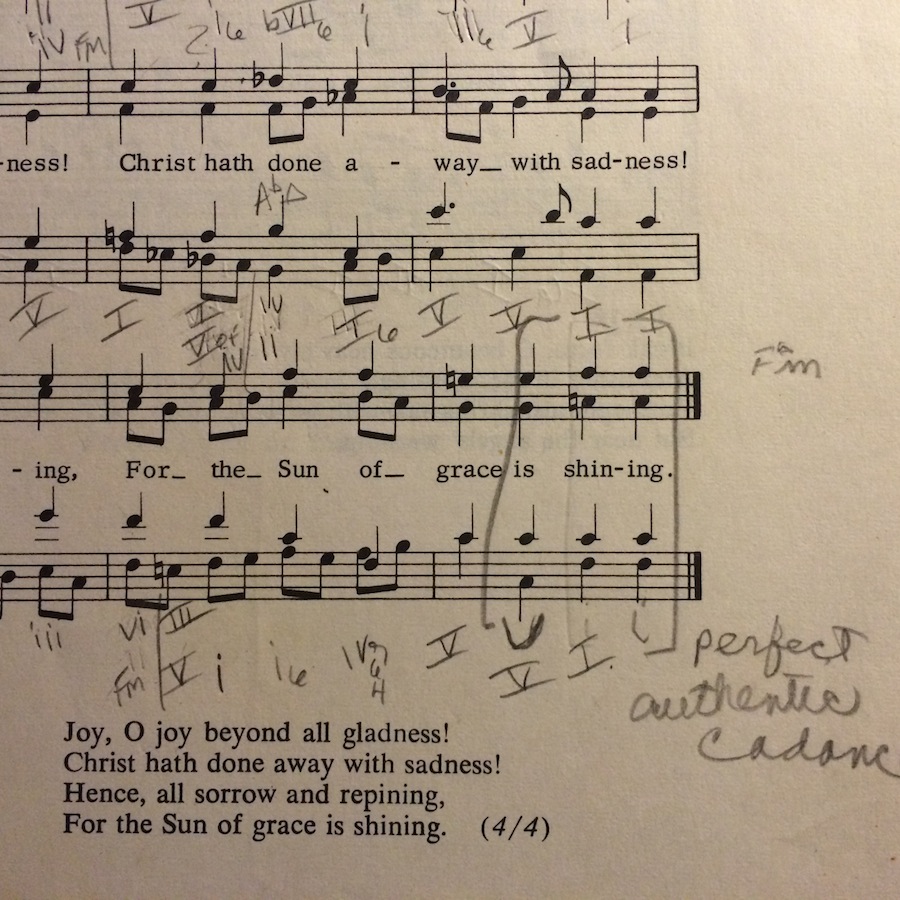~ ear training / 'play by ear' / sing and play ~ ~ a lifelong pursuit of aural understanding of your music ~
~ 'its gotta be 1 of 12 pitches ...' ~ |
"Listen, or thy tongue will keep you deaf." |
Nutshell. As musicians, we all play 'by ear.' For some artists it's how their whole art world moves along all throughout their careers. For others, 'by ear' tunes them into the formal reading ensembles they are a part of. Luckily, we get two ears, hear both sides of the story. And for the rest of us curious folks pursuing academia ? Why, we get the best of both; we can learn songs 'by ear', learning to recognize a song's 'silent architecture' foundations and learn to read their symbols of standard notation, writing a song down today with the same symbols folks been using for a 1000 years or so :) |
Gotta be ... As new songs, and even greater aural challenges come along, by simply listening and repeating over and over the music we are learning 'by ear', we'll soon enough find the pitch sequences of its melody, bass line, chord quality and progression, form and message. Knowing that any one note / pitch is '1 of 12' quickly narrows down our search simply by trial and error. And by aural repetition and elimination of wrong notes, we'll always find any note and its spot in a song's sequence. |
In common practice, there's traditionally only these 12 notes that we use to create our songs, the more we do this the better we'll get at recognizing the essential ones, the same ones that foundation the form for songs in all the Americana styles / genres. |
|
Sing, please. Tis beyond amazing what happens to the 'aura ~ body ~ soul' of an artist when engaged in rote learning by ear; when we synch up together our mind, audio ears and make sound voices all while trying to sort out the various mechanics of our music and come to identify each by its academic terms; its weaving of theories and vocabulary, its rhythms and moving through time etc. Sing to begin by vocalizing these Americana intervals. Click each interval 100 times if necessary to find your pitches vocally. Example 1. |
 |
Cool ... ? How'd that go ? Got some wobbles to sure up ? Keep clickin' the audio and echo the notes. Maybe gently put a finger up to muffle one ear to 'hear' your own voice, or headphones. Be patient and run this every day til' ya got it or just can't take it no more :) Then give the chromatic scale pitches a try. |
Master that and u'll be good to go til' your next challenge comes along; hearing major/minor, bass line stories, chord progressions, time. These vocal / interval exercise can become the 'sing the line play the line' bread and butter of advancing cats, who rely on their 'ears' to make the magic, their voice to articulate the pitches and interpretation of the line. |
Written notation. And for some artists, learning a new song by reading it's story written out in standard music notation is an added bonus. For while music notation has evolved to, with pen on paper, able to record every emotional nuance a composer might imagine, hearing the audio presentation of the song can add to the artistic interpretation of the artist, many of whom become recognizable by their aural artistic signature. |
Academia ~ 'by ear and reading.' With unlimited plays of the audio playback of the written notation examples in this e-book to learn the note symbols and hear the music simultaneously, over and over as many times as it takes to get it right. And for most pro leaning musicians, a combination of both reading notes and 'by ear' is ideal. For this can greatly facilitate learning new songs all through our spectrum of styles and genres. |
For once we learn a few chords, a few songs and form / structure, players will 'by ear' hear a three chord folk / country tune, easy. Even a folk / country / pop song written with the 'diatonic 3 and 3 chords' might just take a couple of tries to learn. Twelve bar blues song / form ? Essential. |
Now, depending on time restraints for learning and even an upcoming gig to perform this song, we might wish we had a chart to facilitate its learning. Lean our yearning for learning off towards the jazz horizon of our style spectrum and reading a chart can make learning a new song happen rather quickly, and with strong readers, they can learn it and play it musically right now.; by sight, as the are aid to be good 'sight readers.' Like most challenges in the arts, learning and getting better is a matter of doing it, making art happen. |
Form, phrase, lots of songs. In Americana song catalogue, the 12 bar blues form has foundationed hundreds of cool songs that folks love to play, dance and listen too. That almost all blues songs tell their story with lyrics, all we need to initially learn is the song's key, its rhythm style, bass line and chords. Knowing that the historical core realization of 12 bar blues form will work near every time, once a '1 4 5 / 12 bar blues' is familiar, when we hear it being played we'll recognize it by ear. And since the basic form is always the same, we'll quickly have a place to start, be able to follow along each story. |
Motion from One to Four. Near every song in our Americana songbook uses some version of these two chords in telling its story. The idea of 'motion', is simply how we move from one chord to another, back and forth. That so many songs use this progression, and that they are at the core of our Americana gospel magics, recognizing these two chords by ear becomes a first challenge and goal to be met. For we can set these two chords as posts in song's form and chord progression, and then filling in by ear what's between them (if anything), just becomes trial and error repetition to find each puzzle pieces. And how we get from One to Four and back to One ? That's often indicative of the musical style a song was originally written in. |
'By ear', jamming, the original way. Learning music by ear is of course the age old way, we modern tuned up artists have the 12 unique tones to compose. So bending notes aside, any note we're trying to find should be one of twelve, so even by trial and error 'one by one' we should eventually lock onto the pitch we seek, check it through octaves maybe, call it good and go to the next note we're looking for. Write it all down and it becomes a transcription, and thus to then know it by heart forever. Knowing it'll get easier the more we do it can bring its rewards $ too with more gigs. Knowing the book (theory) helps too as it reveals similar ways songs of different styles use the same basics to tell the story with; the beat of a story, how it'll find and get the Four chord, and motion back to a tonic note, a basic form, combine to bring a song to life to share. And when searching for what bass or melody note or chord comes that next in a song ... ? |
The melody usually wins. Dial up a song of music you enjoy to listen to and want to learn and maybe even perform at some point. Put the track on repeat mode, where gonna take a few runs at this. If there's lyrics, write the words down and try to count how many measures there are in the phrase. There's going to be a downbeat and 'top' of the form, often when the words begin. No lyrics ? A song's melody is the same thing really. Sing along, find a note by singing then match your voice with the note on an instrument. And sing the melody pitches and work the lines out on your instrument. Any note in any melody has got to be one of twelve. And just so you know, figuring the blues notes often ramps up the challenge, at least till you've done this a time or two. For in theory, there's only four, five maybe six blue notes. That most blues songs have lyrics for stating the melody helps. |
| Other considerations. Determine if the song is written in a major or minor key. There's going to be a tonic letter named pitch which determines the key center of the song.
Hear the bass line ? Take a run at the track listening for just the bass line, there's going to be a rhythm pattern and it'll loop back to its start point, usually right along with the melody, either with the words, so voice, or another instrument. Each pitch has got to be one of twelve right ? So trial and error wins the day every day :) These become the root notes of the chords and their sequence supports the chord progression. Determine chords. Any chord is going to be either major or minor, based on its three note triad. Its root bass note is the chord's label. This is where hearing the chord changes of a song can begin. It'll work in helping to figure out every song. And from this essential basis, we know that there's a vast coolness of chord colors / harmony to explore. And sing the melody pitches and work the lines out on your instrument. Any note in any melody has got to be one of twelve. And just so you know, figuring the blues notes often ramps up the challenge, at least till you've done this a time or two. For in theory, there's only four, five maybe six blue notes. |
Find 2 and 4. Once we're sure of which way the pitches are going, up or down, we want to know how they get set into motion in time. And specifically with our Americana, finding the accented beats on the 2 and 4 of basic 4/4 time. Count to four and find 2 and 4 :) Please count aloud 1 2 3 4 and clap your hands on 2 and 4, giving the claps on 2 and 4 beats a bit more. Ex. 1a. |
Feel a groove happening? Try again. It's there. Once Ya got this grooving, every other measure or so, try to hold back or delay a wee bit your claps. In a sense, you're trying to slow down the music by holding back on a beat. Do this enough and you'll begin to feel a physical 'pull' of time as it moves along with the pulse or beat of the music. This sense of 'pull' is the raw energy of swing. |
For in theory, accenting 2 and 4 makes those beats a bit bigger and stronger too. Two different sizes of ongoing beats creates this 'pull.' How big's the difference? How deep's the swing? Feeling swing's 'pull? Not too tough. Getting it to come out of our horns ? Tough. And learning to swing is our own unique and individual challenge. No one can do it for us. Once you swing, in whatever styles you dig, you'll have this time magic forever and will always be able to 'bring the swing' :) |
The joy of 2 and 4 / swing rhythm is somewhere in all our styles. From a gentle pulse in folk, a thump in the blues, the backbeat snare of rock, a clave in bossa and the ping and sock cymbals in jazz, finding 2 and 4 in Americana musics, and discovering where and how the swing is created, is kind of fascinating. Especially today, now that we've a 100 years or so of recordings to enjoy and behold the evolutions of Americana time and the boundless joy of swing it brings. |
|
Follow the link of suggested listening for finding 2 and 4, and other theory / compositional coolness, in popular Americana styled musics. or cue up your own Americana faves and find the pulse, clap and sing along. Count the beats, clap on 2 and 4. Hold back your clap and find the swing. If there's an accent on 2 and 4, the swing potential is always there :) |
~ super theory gamer changer ~
Sing a chromatic scale. Ever sing all 12 of our pitches in a scale? No ? Right on another first ! Click and sing along with the music. Example 2. |
And what goes up must come down eh ? Try the same pitches but in a descending fashion. Take a deep breath ... :) Example 2a. |
How'd that go? Try it again. And did U chuckle at your results? The degree of your success in this exercise is one measure of how 'good' your ear and voice are syncing up, at this moment in time, and of this way of checking etc. Remember here, we've only these 12 pitches to work all of our music magics, in theory 12 is all we get. So we can sing them all in one line, doing so fine tunes our own inner musical mechanism, of our voice to our ear with a little help form a tuned instrument up such as a piano or guitar if available. And if not, just use the lick above. No surprises here, getting this ability together can take some months, doing it everyday for sure. Ultimate goal. Is to one day sing the chromatic scale, confidently, a capella. Once U arrive at this level of strength, it will startle your intellect, the degree to which mastering this one skill opens colossal sized doors, leading to that vast and fun musical realm Americana. |
Author's note :) My mastering of this skill to sing chromatic took a big moon or two. Ran the lick every day, and super lucky mostly that I had a piano to lean on for pitches. Easy 50 tries before steady solid and confident acappella success but since ... I've had the ability to sing a clear chromatic scale most of the time ... slowly ... that needs refreshing on occasion :) Yet once successful, accepting the 'b9' colortone on V7 really took off and I clearly heard the magic of its 'pull' that the V7b9 can bring in cadential motions. Learned from my mentor bandmate Mike Lawshe at college, who paired it with a Two chord just like this. In 'G.' Ex. 2a. |
How's about dem' apples ? :) These might be the coolest chunks of harmony in an aspiring jazzer's palette right next to the 'tritone sub ~ 2 5 1.' Which thanks to 'b9' had had a perfect landing onto my fretboard, shown to me by college bandmate Kirk Lamberti. One try and I had it, that I could feel its gravity for creating swing. And man have these two cadential motions, V7b9 and the tritone sub, cored a lot of music performance ever since, as both can bring the big swing in a hurry and even some of the voodoo when under the right lighting. So singing the chromatic loop fine tunes the ear to hear each pitch 'counter' to each other, especially the ones that are 'in between' those other ones :) 'Counter', known as 'counterpoint' in classical music school curriculums, 'point versus point', like 'point to point' analogue wires, reveals each pitch's own unique ways of tonal gravity, which helps us find the pull in the time, rhythms and Americana swing that brings the smiles, gets the toes tappin, dancers up dancing and ... :) |
Major / minor. Just like Yin / Yang, our musics have a perfect balance of colors to personify the expressions of our own karma in life. Remember these 'theatre masks' from the olden days ?
From the sadness, the joyous ascends anew. In music, our general starting point in listening is for 'sad' to be sounded with the minor pitches and chords. And 'joyful music' is created with the major pitches and chords. By ear, can you distinguish between the two ? Click away and let your ear be the guide. With just two choices, even total guessers have a 50 / 50 chance right off to get it right. And once you can hear this Yin / Yang basis of all things music, You'll own it to share forever. Taking it nice and slow :) Example 3. |
Hearing the difference? Cool. No? Click again, you'll get it. For in all our musics there's this Yin / Yang quality. Click over to hear an old time 'minor into major' melody. And if all this major / minor theory is a new for you, consider its full discussion and then ace the quiz :) |
Learning music by ear. At college, 'let YOUR ear' be the guide was a phrase that floated through every once in a while. For in legit, degree granting academia, understanding the notation symbols, and reading and writing the language is essential. So while 'by ear' was never discouraged, it was perfectly reserved for 'art' concepts. Such as when choosing the perfect chord color for a crucial spot in a song. That how I heard the chord, while puzzling my art together, me ear got final say in which piece fit best. And in choosing the colors by ear, more swing built right in :) For in theory, the theory just illuminates possibilities ... and the artist decides how it becomes their the art. |
"Learn the rules like a pro so you can break them like an artist." |
wiki ~ Pablo Picasso |
Hearing the bass note roots and intervals. Get a good start 'by ear'n Americana musics with the bass notes and their theory. Look to master all of these, there's only a few really, over the longterm in your studies. Sequenced here to follow the cycle of 5th's, sing the notes best you can, and find the pitches on your instrument. When a piano is handy, consider finding them all there too. Thinking in the key of 'C.' Sound and sing ... :) |
Octaves |
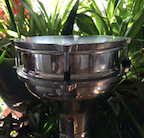 |
|
||
5th's |
 |
|||
4th's |
 |
|||
minor 3rd |
 |
|||
major 3rd |
 |
|||
by step |
 |
|||
1/2 step chromatic |
 |
|||
blue 7th |
 |
|||
#4 / b5 tritone |
 |
|||
motion to Four |
 |
Triads ~ 1 3 5 3 1. Once our ability to hear major and minor are cool, understanding, hearing and singing the the triads is the solid next step. For we can filter these three intellectual abilities with the three pitches of a triad, all sorts of magics manifest. Might even be a kaboom moment for some learners reading here. So in college ear training class 101, the first lick we learned on the first day of class goes just like this. We sang the pitch numbers of the triad with the music, thus the '13531.' Thinking 'C' major. Example 4. |
Familiar from somewhere ? Three chords and the truth? Yep, pretty much :) We sang this exercise first thing in every ear training class. It is also a great warmup for choirs, which usually just moves the triad up by half step. Thus, example 4a. Sing along with this one too. |
Cool, sound like the organ player at the sporting event ? Yep, that's the lick :) So, ya cool with a chromatic organization of our resources ? How about the cycle of 5th's to plot out the pitches ? |
Minor triads. Here's the same '1 3 5' idea as above but with minor triads, outlining the diatonic One, Four and Five triads of a minor key / tonal center. Thinking 'A' minor. Example 4b. |
Three chords and the truth in minor? Yep. Transpose the pitches as necessary to suit your own vocal range. Feeling adventurous today ? Run the minor triads chromatically. From 'A' minor ascending. Example 4c. |
Cool? Even a basic mastering of singing the triads will keenly focus in our ability to hear its magics in all styles of music. For its everywhere and been everywhere, all along our musical journey from day one. Really? Maybe so, especially for those that believe in the legends. |
|
1720's J. S. Bach basis. At formal music school, we studied the music of J.S. Bach. We had the recordings and the written music, and in theory class, went through measure by measure, looking at every pitch and discussed its relationship to it other pitches through the whole song. Click the pic to hear this song by the 'master of all the changes' himself. J. S. Bach: Well-Tempered Clavier, Book 1 - 1. Prelude & Fugue #1 In C, BWV 846.
|
Diatonic / non-diatonic. A true key to understanding the theories of Americana is often termed in this work as the 'blues rub.' In creating these 'rubs' of sound, we're simply choosing to rub selected pitches together that wouldn't 'normally' do so. Some pitch rubs make the blue colors. Theory thought and lingo wants to describe these rubbed notes as diatonic, so a pitch within a chosen key center. Or non diatonic, so a pitch not within a key. Since there's only 12 pitches, and we use mostly use 7 to create a key, we're left with 5 to sort out as non diatonic. Thinking 'C' major, please compare these pitches. Example 5. |
Hear the dissonance of the non diatonic notes? Cool ... or just click it again. Some of the notes just sound out of tune? Yea, that's all it is. Like the melody pitches of the last two measures? Jazzers call these pitches as being 'outside' of the diatonic realm. Yet, in another musical context, these become essential pitches to rub up to the diatonic ones to create the blues hue. Can these other five pitches become the blue notes ? And further, the altered colortones of our chords? Well yes to both ! |
In this next idea we add a 'minor 3rd blue note' to make a true V7 chord, and then add the non-diatonic pitches to create some of the common blues and jazzy chords we love. Example 5a. |
Hear the blues hue. The blues hue is that bit of Americana coolness we often hear in songs that sound near purely diatonic and add in a bit of the blue to sweeten the mix. Here's a melody from wayback with a bit of the blues hue at the close of the idea. Example 6. |
Hear the bit of blues to close out the oldtime melody? Just tickling the diatonic pitches with a hint of their blue note neighbors. This sort of embellishment is pure pure original Americana. And while it can happen about anywhere in any of our style of musics, it's possible to overwork it. Go to the well. But that's a choice each of us as artists get to make :) |
Hearing chord progressions. Since the 1500's or so, we've been joyously stacking up pitches into chords more and more and string chords together to make chord progressions for our songs. By the dawn of the 19th century and forward, melody, supported by chords, the 'homophonic' style, was the way of making our musics. By the 1900''s in Americana, the four bar modal blues form, and its expanded 12 bar form, and there's Tin Pan Alley songs in the 16 and 32 bar forms. And once these song forms are established and solid, we've stuffed them all with various chord colors and progressions to write a million different songs. |
|
Cool? Hearing the changes takes time, just be patient, curious and love the flow of the harmony as it all passes by. Find some classic 'three chords and the truth' songs and learn to hear the basics of diatonic harmonic motions. "There's only a couple of places it'll go ..." is a common quote for near all of our Americana progressions. And then there's ... 'jazzing it up' :) |
This last entry for ear training and listening also comes from college schooling, this time from music history class. Our professor, Dr. Guibbory, would talk about all things history about where the development of a particular style of music, historical era, and play musical examples, while illuminating often by gesture, the finer points of what we were listening to. Art, theory, compositional, textures, orchestrations, instrumentation, great licks and bass lines, cool chord progressions, in general, anything Dr. Guibbory found cool in the music, we all heard it together and began to better understand what we were listening to. |
Review / songs. Learning music 'by ear' is historically the way we've always done it. Getting 'schooled' in music, learning to read notation and understand its puzzles is what interested learners will often pursue. In today's modern ways of education, there's plenty to learn, and share, with those who are interested and disciplined to work through what artists and scholars have now provided us. The skills for learning songs 'by ear.' Just ask the question ... Is this song in; are there chords atop the bass notes ? and how many measures in the song's loop ? ... thus the 'lifting' begins ... |
"Motion by fourth and half step, try those first." |
References. References for this page's information comes from school, books and the bandstand and made way easier by the folks along the way. |
Find a mentor / e-book / academia Alaska. Always good to have a mentor when learning about things new to us. And with music and its magics, nice to have a friend or two ask questions and collaborate with. Seek and ye shall find. Local high schools, libraries, friends and family, musicians in your home town ... just ask around, someone will know someone who knows someone about music and can help you with your studies in the musical arts. |
|
Always keep in mind that all along life's journey there will be folks to help us and also folks we can help ... for we are not in this endeavor alone :) The now ancient natural truth is that we each are responsible for our own education. Positive answer this always 'to live by' question; 'who is responsible for your education ... ? |
Intensive tutoring. Luckily for musical artists like us, the learning dip of the 'covid years' can vanish quickly with intensive tutoring. For all disciplines; including all the sciences and the 'hands on' trade schools, that with tutoring, learning blossoms to 'catch us up.' In music ? The 'theory' of making musical art is built with just the 12 unique pitches, so easy to master with mentorship. And in 'practice ?' Luckily old school, the foundation that 'all responsibility for self betterment is ours alone.' Which in music, and same for all the arts, means to do what we really love to do ... to make music :) |
 |
"These books, and your capacity to understand them, are just the same in all places. Always bear in mind that your own resolution to succeed, is more important than any other one thing." |
|
Academia references of Alaska. And when you need university level answers to your questions and musings, and especially if you are considering a career in music and looking to continue your formal studies, begin to e-reach out to the Alaska University Music Campus communities and begin a dialogue with some of Alaska's finest resident maestros ! |
|
~ |





